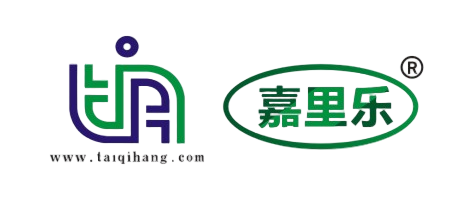Understanding the Importance of Aluminium Foil Containers in Modern Packaging
Aluminium foil containers have become an essential part of food packaging and storage solutions across various industries. Their widespread use is attributed to their unique combination of durability, convenience, and eco-friendliness. These containers offer excellent protection for food products, ensuring freshness and quality are maintained during storage and transport. Additionally, aluminium foil containers provide versatility in both commercial and household settings. Their ability to withstand varying temperatures makes them suitable for refrigeration, freezing, and even oven heating. As the demand for efficient, sustainable packaging grows, aluminium foil containers continue to gain prominence due to their exceptional properties and practical benefits.
Key Material Properties That Define High-Quality Aluminium Foil Containers
Durability and Strength for Reliable Food Protection
One of the fundamental features of high-quality aluminium foil containers is their durability. These containers are crafted from strong yet lightweight aluminium foil, which offers excellent resistance to tearing and punctures. This strength ensures that the container maintains its shape during handling and transportation, preventing food from being exposed to contaminants or damaged by external forces. The robustness of aluminium foil containers also means they can be stacked without collapsing, which is essential for both storage and shipment efficiency. The material’s resilience helps in preserving the integrity of the food inside, making these containers a reliable choice for packaging a wide variety of food products.
Thermal Conductivity and Temperature Resistance
Another important feature of aluminium foil containers is their superior thermal conductivity. This characteristic allows for even heat distribution during cooking or reheating, which helps to maintain the food’s texture and flavor. Aluminium foil containers can safely endure high temperatures in ovens and grills without warping or melting, unlike many plastic alternatives. They are also suitable for freezer storage because the foil provides an effective barrier against moisture and air, helping to prevent freezer burn. This temperature resistance combined with excellent heat transfer makes aluminium foil containers extremely versatile and practical for both food preparation and storage.
Design Features That Enhance the Usability of Aluminium Foil Containers
Variety of Sizes and Shapes for Different Food Needs
High-quality aluminium foil containers come in a diverse range of sizes and shapes to cater to different packaging requirements. Whether it’s a small container for individual portions or a large tray for catering events, these containers offer flexibility. The availability of rectangular, square, and round shapes allows food businesses and consumers to choose the most suitable container based on the type of food and portion size. This variety not only optimizes the packaging space but also enhances the presentation of the food, which is important for consumer appeal. Having the right container shape and size ensures efficient use of aluminium foil containers and reduces unnecessary waste.
Secure Lids and Sealing Options for Freshness and Leak Prevention
The usability of aluminium foil containers is significantly improved by the availability of compatible lids and sealing options. Many containers are designed with sturdy rims that support tight-fitting lids, providing an airtight seal that preserves food freshness and prevents leaks. This is particularly important for takeaway services and food delivery businesses that require reliable packaging to maintain quality during transport. Some aluminium foil containers also feature disposable or reusable lids made from foil, plastic, or paperboard, allowing flexibility based on the user’s needs. The secure sealing capability reduces the risk of contamination and spillage, which enhances consumer satisfaction and safety.
Environmental and Health Considerations of Aluminium Foil Containers
Recyclability and Eco-Friendliness
Aluminium foil containers stand out as an environmentally friendly packaging solution due to their recyclability. Aluminium is a highly recyclable material that can be reused multiple times without degrading its quality. This recyclability helps reduce landfill waste and lowers the environmental footprint associated with packaging materials. Many recycling programs accept aluminium foil containers, encouraging consumers and businesses to recycle properly. Choosing aluminium foil containers supports sustainable practices, making them an ideal option for companies and individuals aiming to reduce their ecological impact. This eco-friendly aspect is increasingly important in today’s market, where consumers prioritize sustainability.
Food Safety and Chemical Resistance
Ensuring food safety is paramount when selecting packaging materials. High-quality aluminium foil containers are non-toxic and do not release harmful chemicals into food, even under high-temperature conditions. Aluminium acts as an excellent barrier against oxygen, light, and moisture, protecting the food from spoilage and contamination. Unlike some plastic containers, aluminium foil containers do not contain BPA or other harmful substances that can migrate into food. This chemical resistance ensures that the food remains safe and maintains its original taste and nutritional value. As food safety regulations become more stringent, aluminium foil containers continue to meet and exceed these standards.
Practical Advantages in Commercial and Household Settings
Ease of Use and Convenience for Consumers
The practicality of aluminium foil containers extends beyond their protective qualities. They are lightweight, easy to handle, and disposable, making them extremely convenient for both consumers and food service providers. These containers eliminate the need for additional dishes, which simplifies meal preparation, serving, and cleanup. Their ability to be heated directly in ovens or microwaves adds to their user-friendly appeal. Consumers appreciate aluminium foil containers for their versatility, especially when dealing with busy lifestyles and the demand for quick meal solutions. This convenience factor is a significant driver of the containers’ popularity in both home kitchens and food businesses.
Cost-Effectiveness and Availability
Cost efficiency is a major consideration in choosing packaging solutions, especially for commercial food businesses. Aluminium foil containers offer a cost-effective option due to their relatively low price combined with their durability and versatility. They provide excellent value for money, allowing businesses to package and deliver food efficiently without compromising on quality. Additionally, aluminium foil containers are widely available and come in bulk packaging, which further reduces costs. Their long shelf life and resistance to damage during storage also contribute to cost savings. The affordability and accessibility of aluminium foil containers make them an attractive choice for a broad range of users.
Future Trends and Innovations in Aluminium Foil Containers
Technological Enhancements for Improved Performance
Innovations in manufacturing technology are continuously enhancing the performance of aluminium foil containers. Advances in foil thickness and layering techniques have improved the strength and heat retention properties of these containers. Some manufacturers are incorporating eco-friendly coatings that enhance recyclability and reduce the environmental impact further. Additionally, smart packaging solutions, such as containers with integrated temperature indicators or tamper-evident seals, are emerging in the market. These technological advancements ensure that aluminium foil containers remain competitive and relevant in a rapidly evolving packaging industry.
Expanding Applications Beyond Food Packaging
While aluminium foil containers are predominantly used for food packaging, their applications are expanding into other sectors. Industries such as pharmaceuticals, cosmetics, and electronics have begun exploring aluminium foil containers for packaging sensitive products requiring protection from moisture and light. This diversification reflects the material’s versatility and potential for growth in new markets. As demand increases, manufacturers are likely to develop specialized aluminium foil containers tailored for various non-food applications, broadening the scope of this packaging solution.
FAQ
Are aluminium foil containers safe for oven use?
Yes, aluminium foil containers are specifically designed to withstand high temperatures in ovens and grills. They distribute heat evenly and do not melt or release harmful substances when used properly, making them safe for cooking and reheating food.
Can aluminium foil containers be recycled easily?
Aluminium foil containers are highly recyclable and accepted by most recycling programs. It is important to clean them of any food residue before recycling to ensure they can be properly processed.
What sizes do aluminium foil containers come in?
Aluminium foil containers come in a wide range of sizes, from small single-serving trays to large catering pans. This variety allows users to select the appropriate container size for their specific food packaging needs.
How do aluminium foil containers compare to plastic containers in terms of environmental impact?
Aluminium foil containers are more environmentally friendly because they are recyclable without losing quality, whereas many plastics degrade after recycling. Additionally, aluminium reduces the reliance on fossil fuel-based plastics, contributing to lower environmental pollution.
Table of Contents
- Understanding the Importance of Aluminium Foil Containers in Modern Packaging
- Key Material Properties That Define High-Quality Aluminium Foil Containers
- Design Features That Enhance the Usability of Aluminium Foil Containers
- Environmental and Health Considerations of Aluminium Foil Containers
- Practical Advantages in Commercial and Household Settings
- Future Trends and Innovations in Aluminium Foil Containers
- FAQ

